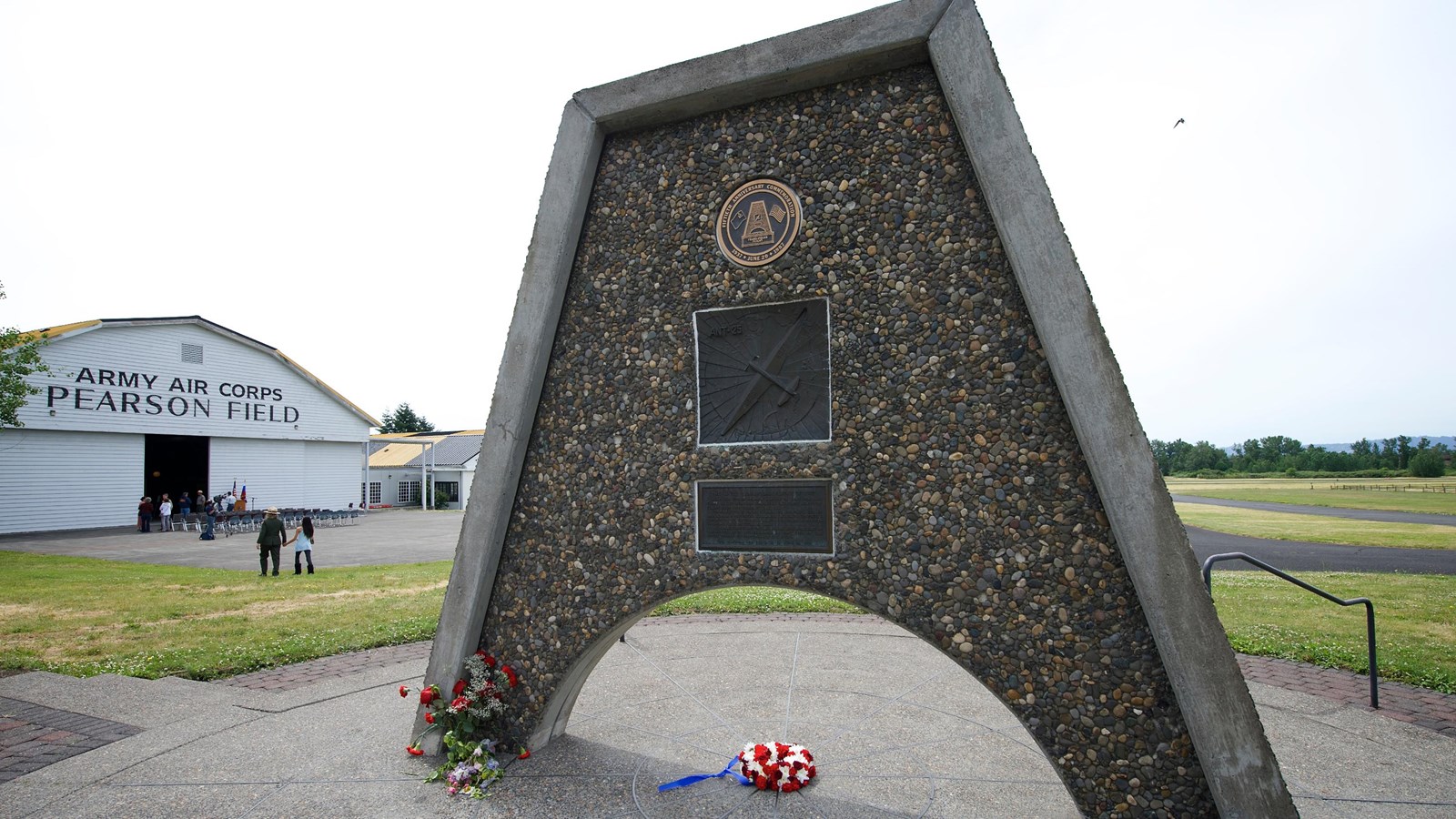Last updated: September 8, 2020
Place
Chkalov Transpolar Flight Monument

NPS Photo / Troy Wayrynen
Quick Facts
Location:
Fort Vancouver National Historic Site
Amenities
2 listed
Benches/Seating, Historical/Interpretive Information/Exhibits
This monument, located just west of Pearson Air Museum at Fort Vancouver National Historic Site, commemorates the world's first transpolar flight. In 1937, three Soviet aviators flew an ANT-25 aircraft from Moscow, Russia, to Vancouver, Washington.
On June 20, 1937, the world's attention turned to Pearson Field when a Russian ANT-25 aircraft landed after making the first non-stop flight over the North Pole.
The red and gray, single-engined aircraft "Stalin's Route" carried over 2,000 gallons of fuel, and sported a 112 foot wingspan. It was crewed by three of the Soviet Union's top airmen: Valery Chkalov, pilot; Georgi Baidukov, co-pilot; and Alexander Belyakov, navigator.
Taking off from Moscow on June 17, 1937, and bound for Oakland, California, the aircraft flew for almost 65 hours through sub-zero temperatures and thickening ice on its wings, before a sudden drop in oil pressure forced them to land at Pearson Field.
The unexpected aviators breakfasted with Vancouver Barracks' commanding officer, General George C. Marshall, then faced throngs of journalists, politicians, and curious spectators. They were treated to a month-long tour of the United States that ended in Washington, D.C. at a reception with President Roosevelt. The massive aircraft was dismantled and shipped to Paris for display, then home to Moscow.
On June 20, 1937, the world's attention turned to Pearson Field when a Russian ANT-25 aircraft landed after making the first non-stop flight over the North Pole.
The red and gray, single-engined aircraft "Stalin's Route" carried over 2,000 gallons of fuel, and sported a 112 foot wingspan. It was crewed by three of the Soviet Union's top airmen: Valery Chkalov, pilot; Georgi Baidukov, co-pilot; and Alexander Belyakov, navigator.
Taking off from Moscow on June 17, 1937, and bound for Oakland, California, the aircraft flew for almost 65 hours through sub-zero temperatures and thickening ice on its wings, before a sudden drop in oil pressure forced them to land at Pearson Field.
The unexpected aviators breakfasted with Vancouver Barracks' commanding officer, General George C. Marshall, then faced throngs of journalists, politicians, and curious spectators. They were treated to a month-long tour of the United States that ended in Washington, D.C. at a reception with President Roosevelt. The massive aircraft was dismantled and shipped to Paris for display, then home to Moscow.
